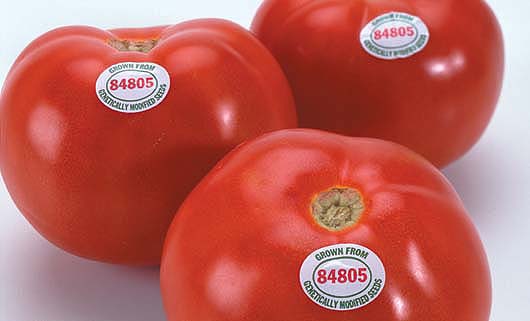By Elof Axel Carlson
The tomato is botanically a fruit or more specifically a berry. We think of it as a vegetable because of its use in pasta sauces, soups and stews. The Supreme Court in 1893 ruled that for taxing and tariff purposes, it is a vegetable because of its usage in cooking.
The tomato belongs to the species Solanum lycopersicum. Thus, it belongs to a family of some 3,000 species worldwide. But tomatoes arose and were cultivated in the Andes and made their way to Mexico where they were domesticated. From there they were imported to Europe in the 15th century.
Because they are classified as members of the Solonaceae family, which includes the deadly nightshade, they were sometimes regarded as poisonous. But the domesticated tomato varieties began appearing in Spain, Italy and England and soon spread as far as China, which is now the world’s largest consumer and producer of tomatoes.
The tomato gets its name from the Aztec word “tomatl.” Until 1940 the domesticated tomatoes throughout the world came from the Mexican varieties the Spanish brought back in the late 1400s and early 1500s.
The tomato plant cell has a total of 24 chromosomes, and its pollen or ovules have a chromosome number of 12. Their genome was not worked out until 2009, and a comparative study of 360 varieties and species of tomatoes was published in 2014. The pre-1940 tomato varieties for food had very few of the mutant gene varieties found in the wild species in South America (less than 10 percent).
Thus, most market tomatoes are recent varieties created in university and commercial farms since 1940.
The farmers buy hybrid seed, and tomato seed companies make sure that their seeds are hybrid to keep farmers from planting crops from the tomatoes that are harvested. This was a policy first started by agribusiness for hybrid corn beginning in 1908.
The genomic analysis of tomatoes and their related species give an evolutionary history of tobacco, then peppers, then eggplants, then potatoes and finally tomatoes as the sequence of species emergence. The molecular insights into plant genomes, by sequencing their genes, have led to a controversial field of genetically modified foods.
One of the first was short lived. I remember buying “Flavr Savr” tomatoes in a supermarket in Setauket. The manufacturer had inserted a gene for delayed ripening and thus longer shelf life in stores. I could not tell any difference in taste or texture from those manufactured by inserting genes from other varieties of tomato plants.
Just as people in the 1500s feared tomatoes when first introduced into Europe as likely to be poisonous (they weren’t), the fear of genetically modified foods led to their quick demise in the market. Today it is almost impossible to buy foods (grains, vegetables, fruits, fish, fowl, or livestock) that are guaranteed to be free of genetic modification.
Elof Axel Carlson is a distinguished teaching professor emeritus in the Department of Biochemistry and Cell Biology at Stony Brook University.





